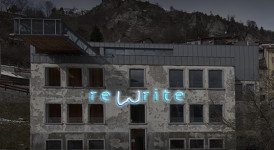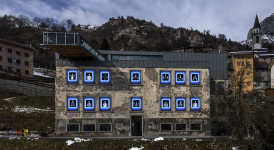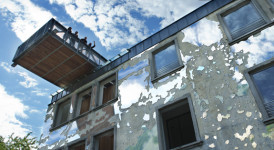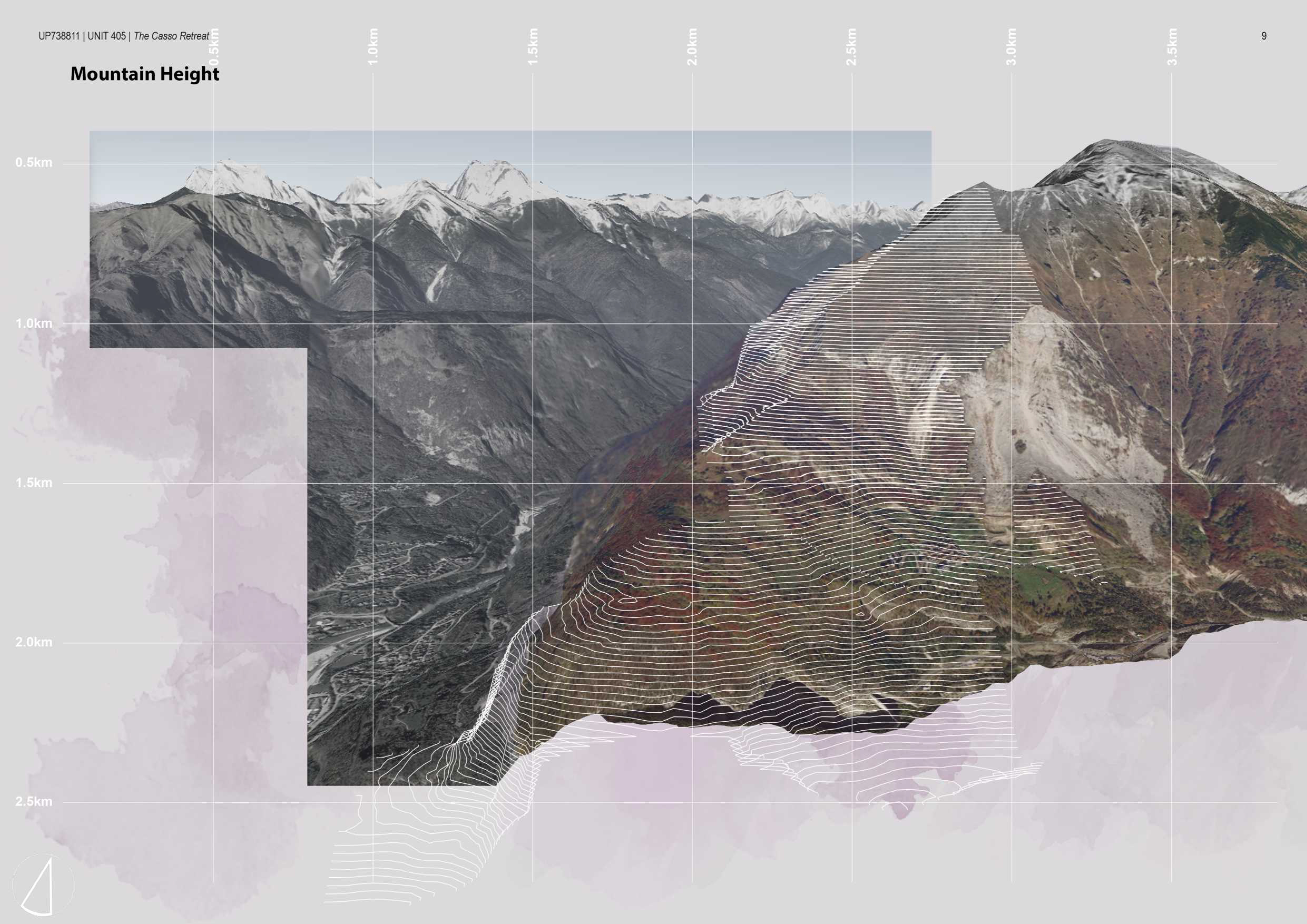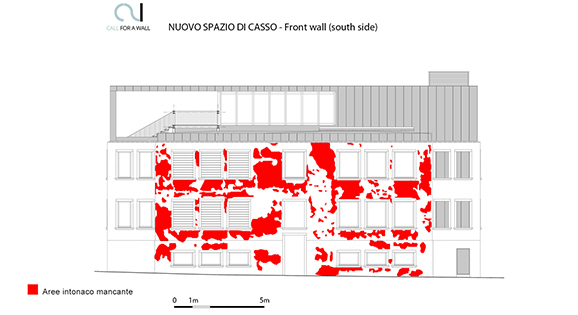
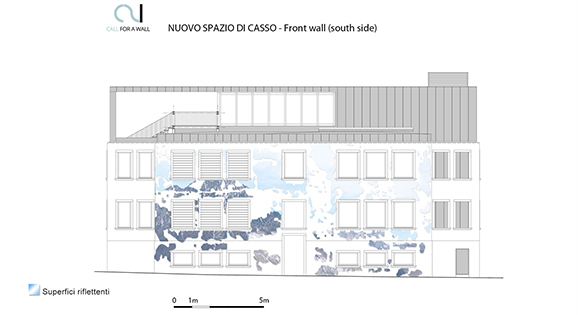
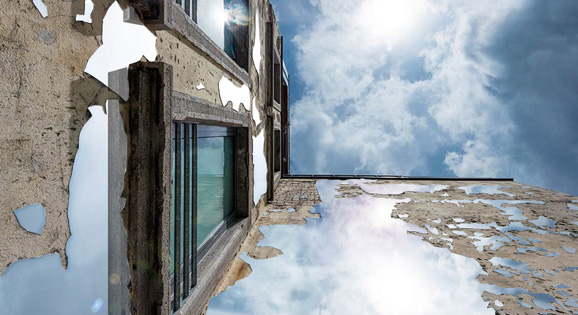
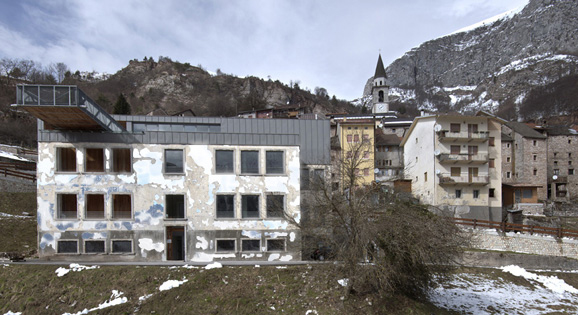
There is a responsibility with which every human begin has to measured himself, at least once in a lifetime on this planet. And this responsibility can’t be disconnected from the consciousness that resides in all of us…
If the events of the world are able to modify some of our convictions and of our way of thinking and feeling, it implies/explains that we are in a constant osmosis between the inside and the outside of ourselves. The awareness of being in the world and of having a responsibility about it, may generate reflections immersed in depth that bring out our real consciousness. In front of it, it’s impossible to hold back. It makes us perceive the truth of the things around us and the reality of our interiority.
Using the mirror as a metaphor, reality between the self and the outside self, manifests itself without subterfuge and tips over. The reflecting element, belonged to collective imagination with determined symbolic aspects, is charged with a new value, placing (physically and ideally) in front of an apparently far reality: the image of the mountain in its grandeur, the greatness of the sky, the peace of the silence and the surrounding greenery, the sun, the people, are reflected in asymmetrical and irregular reflecting forms, placed in complicated furrows of a part of the world. Furrows recall to a memory to be preserved and respected, where the element considered as a “fracture”, is recomposed and healed through a careful dialog between the inside and the outside. At the same time, we can find us in front of and inside of a scenery, a picture, a thought, a memory, a fantasy, with infinite possibilities to change own perspectives, overturning concepts and beliefs. Not forgetting that every little reflecting part embodies the greatest vision. It’s possible to talk about an invitation to think of each of the possible forms, finally dictated by the knowledge of each of us.
Materials: mirror sheets (plexiglass is preferred) to be shaped, specific glue or other support for the support of individual pieces, by wall.
The installations is composed by many mirror parts, shaped and cut (laser?) tracing exact contours of the pieces of plaster missing from the facade of the space concerned.
It might be useful the technique of frottage to highlight, in a way closer to the real, the dimensions and the countless and detailed forms of the spaces without plaster.
Every template will have a lower margin compared to the real, to fit together perfectly and to positioned it at the same level of the wall. Doing a mapping of the entire facade, it’s possible to define all the parts to shape on the reflective sheets. The wall holder will be removable, it will not damage the preexisting state of the facade and will be mass in security. Removed, the entire installation, or part of it, will can be reassembled on the wall, following the mapping done previously, to reproduce the exact sign carved into the facade on the exhibition space of Casso, keeping the memory.
–
C’è una responsabilità con la quale ogni essere umano è chiamato a misurarsi, almeno una volta nella vita, su questo pianeta. E questa responsabilità, non può essere scollegata dalla coscienza che risiede in ognuno di noi…
Se gli eventi del mondo circostante sono capaci di modificare alcune delle nostre convinzioni e del nostro modo di ragionare e di sentire, ciò implica/spiega il fatto che siamo in continua osmosi tra il dentro e il fuori di noi stessi. La consapevolezza dell’essere al mondo e di avere una responsabilità verso di esso, può generare riflessioni che si immergono in profondità tali da far emergere la nostra vera coscienza. Trovandosi di fronte ad essa, non è possibile tirarsi indietro. Questa ci fa percepire la realtà delle cose che ci circondano e la realtà della nostra interiorità.
Utilizzando lo specchio come metafora, la realtà tra il sé e il fuori dal sé, si manifesta senza sotterfugi e si ribalta. L’elemento specchiante, appartenente all’immaginario collettivo con determinati aspetti simbolici, si carica di un valore nuovo, ponendosi di fronte (sia fisicamente che idealmente) ad una realtà apparentemente lontana: l’immagine della montagna nella sua imponenza, la grandezza del cielo, la pace del silenzio e del verde circostante, il sole, gli abitanti, si riflettono nelle forme specchianti asimmetriche e irregolari, poste nei complessi solchi di una porzione di mondo. Solchi che rimandano ad una memoria da conservare e rispettare, dove l’elemento che si può considerare di “frattura”, viene ricomposto e rimarginato grazie ad un attento dialogo tra il dentro e il fuori. Possiamo trovarci di fronte e dentro, allo stesso tempo, di uno scenario, di un’immagine, di un pensiero, di un ricordo, di una fantasia, con infinite possibilità di modificare le proprie prospettive, ribaltando concetti e convinzioni. Senza dimenticare che, ogni piccola parte riflettente, racchiude in sé, la visione più grande.
Si può parlare di un invito al riflettere in ognuna delle forme possibili, dettate infine, dalla consapevolezza di ognuno di noi.
Materiali: lastre specchianti (è preferibile il plexiglass) da sagomare, collante specifico o altro supporto per il sostegno dei singoli pezzi, a parete.
L’installazione è composta da innumerevoli parti di specchio, sagomate e tagliate (laser?), ricalcando i precisi contorni delle parti di intonaco mancante della facciata dello spazio in questione. Potrebbe essere utile la tecnica del frottage per evidenziare, in maniera più vicina al reale, le dimensioni e le innumerevoli e particolareggiate forme degli spazi privi di intonaco. Ogni sagoma avrà un margine inferiore rispetto al reale, per incastrarsi alla perfezione e posizionarsi allo stesso livello della parete. Effettuando una mappatura dell’intera facciata, si potranno definire tutte le parti da sagomare sulle lastre riflettenti.
L’aggancio a parete sarà removibile, non danneggerà lo stato preesistente della facciata e sarà messa in sicurezza. Una volta rimossa, l’intera installazione, o parte di essa, potrà essere rimontata a parete, seguendo la mappatura effettuata precedentemente, per riprodurre la precisa traccia incisa nella facciata dello spazio espositivo di Casso, conservandone la memoria.
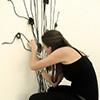
 napoli
napoli
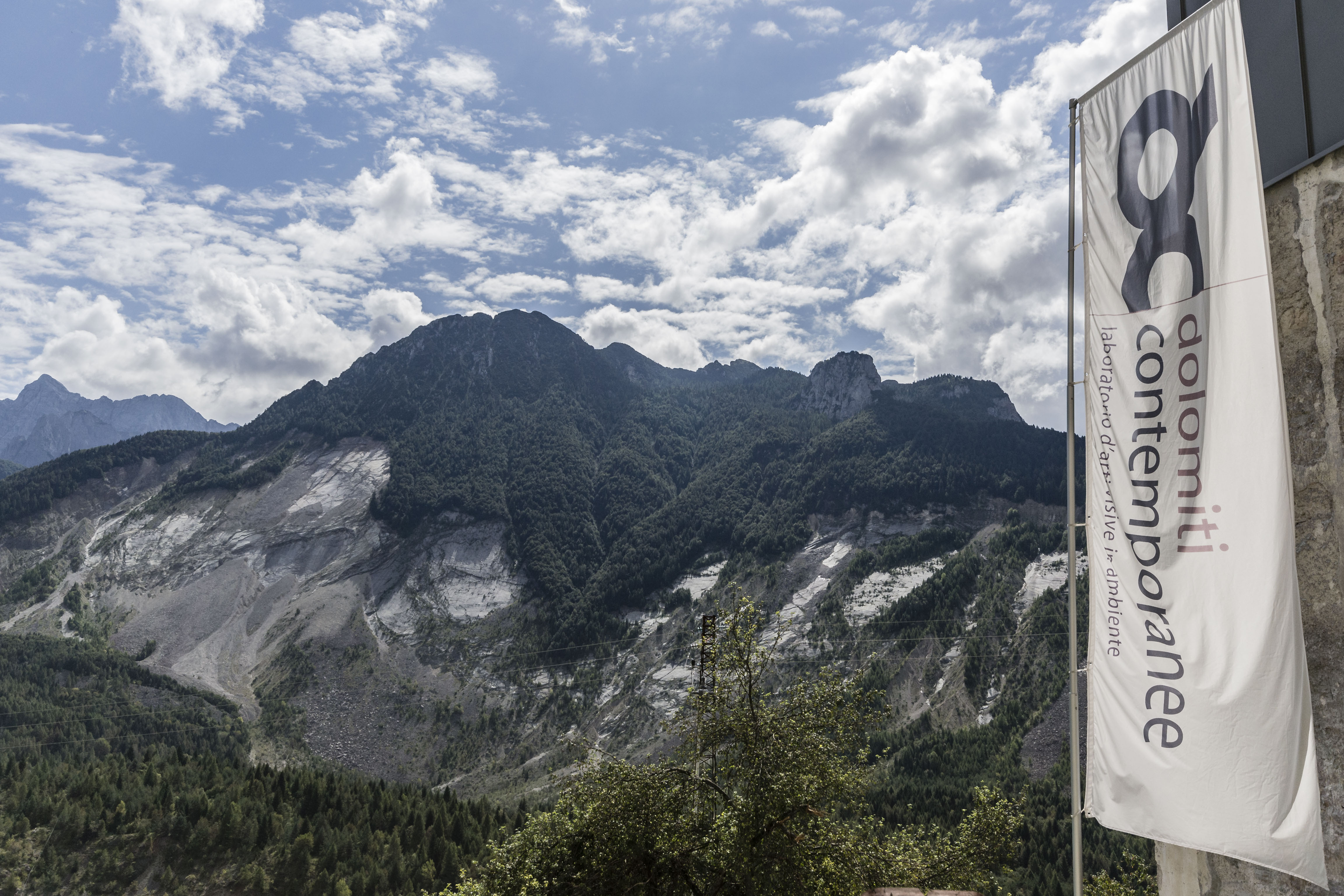
Tuesday, June 15th 2021, 2 – 4 PM, webinar panel:
two calls for vajont: fase _restart.
Vajont: [...]





